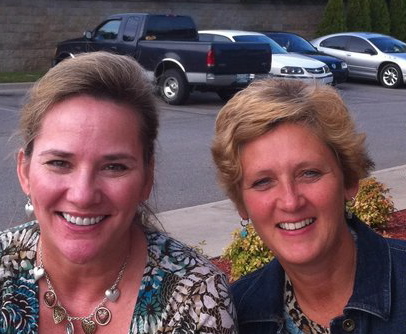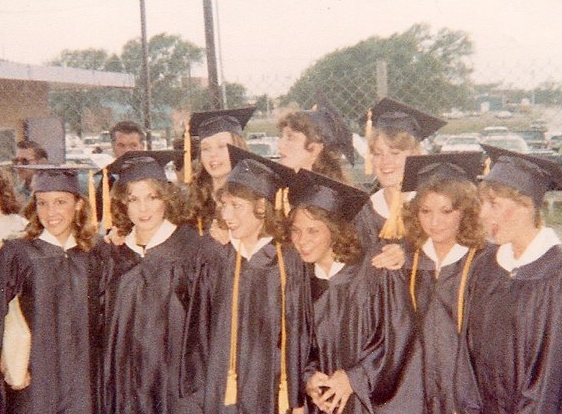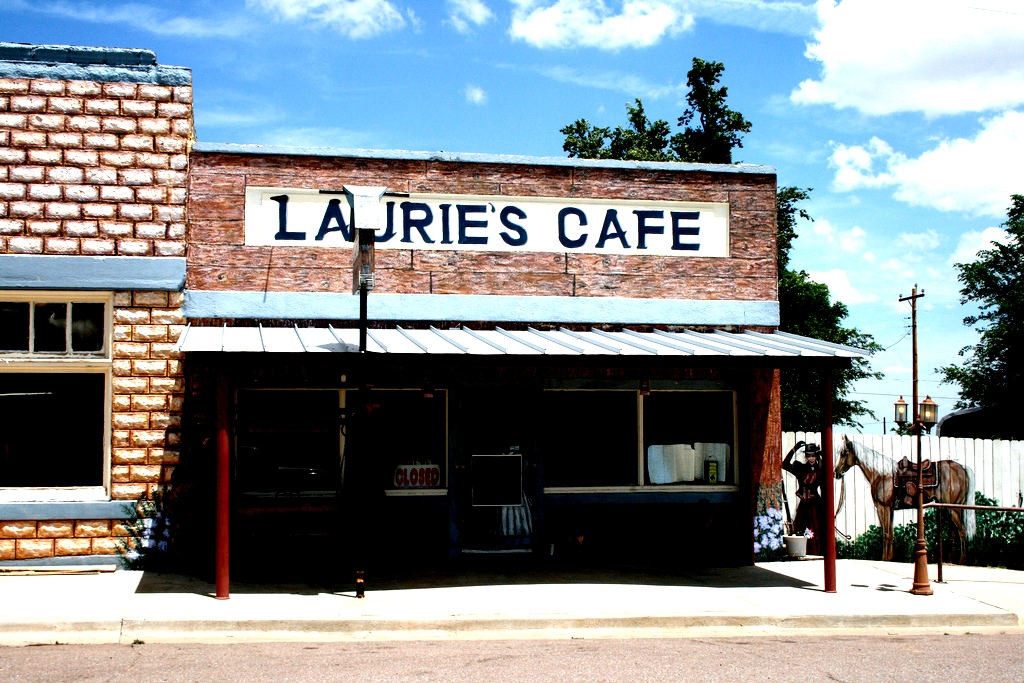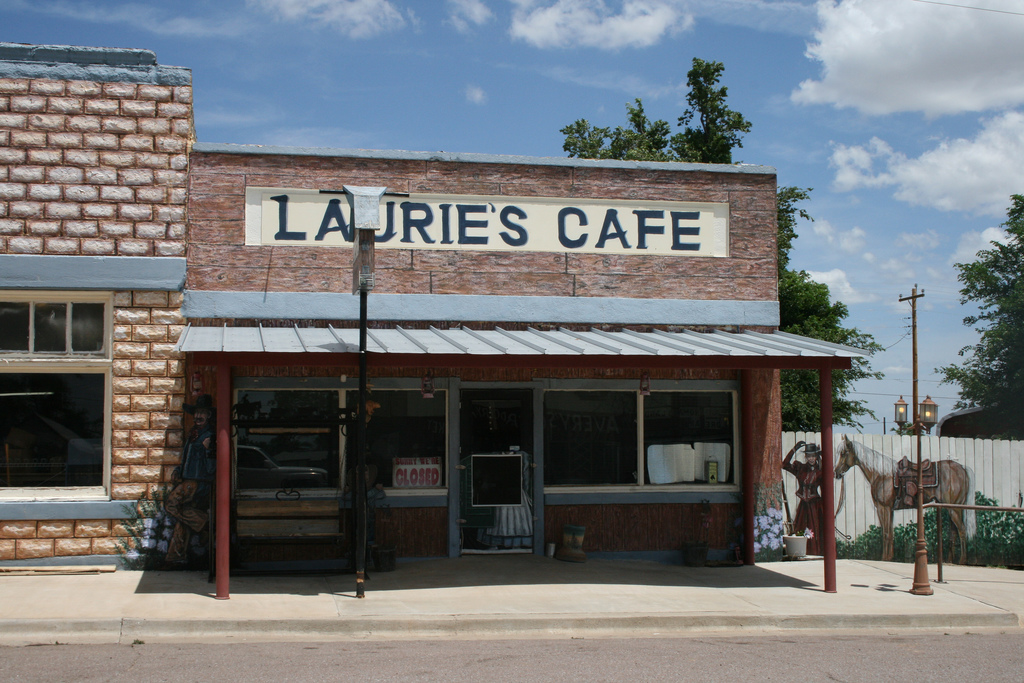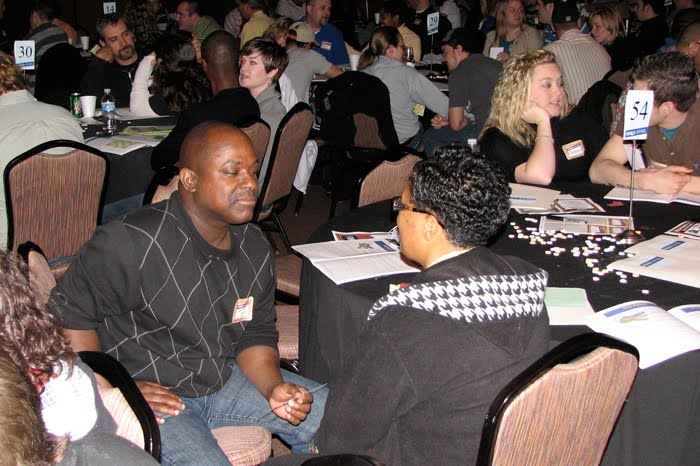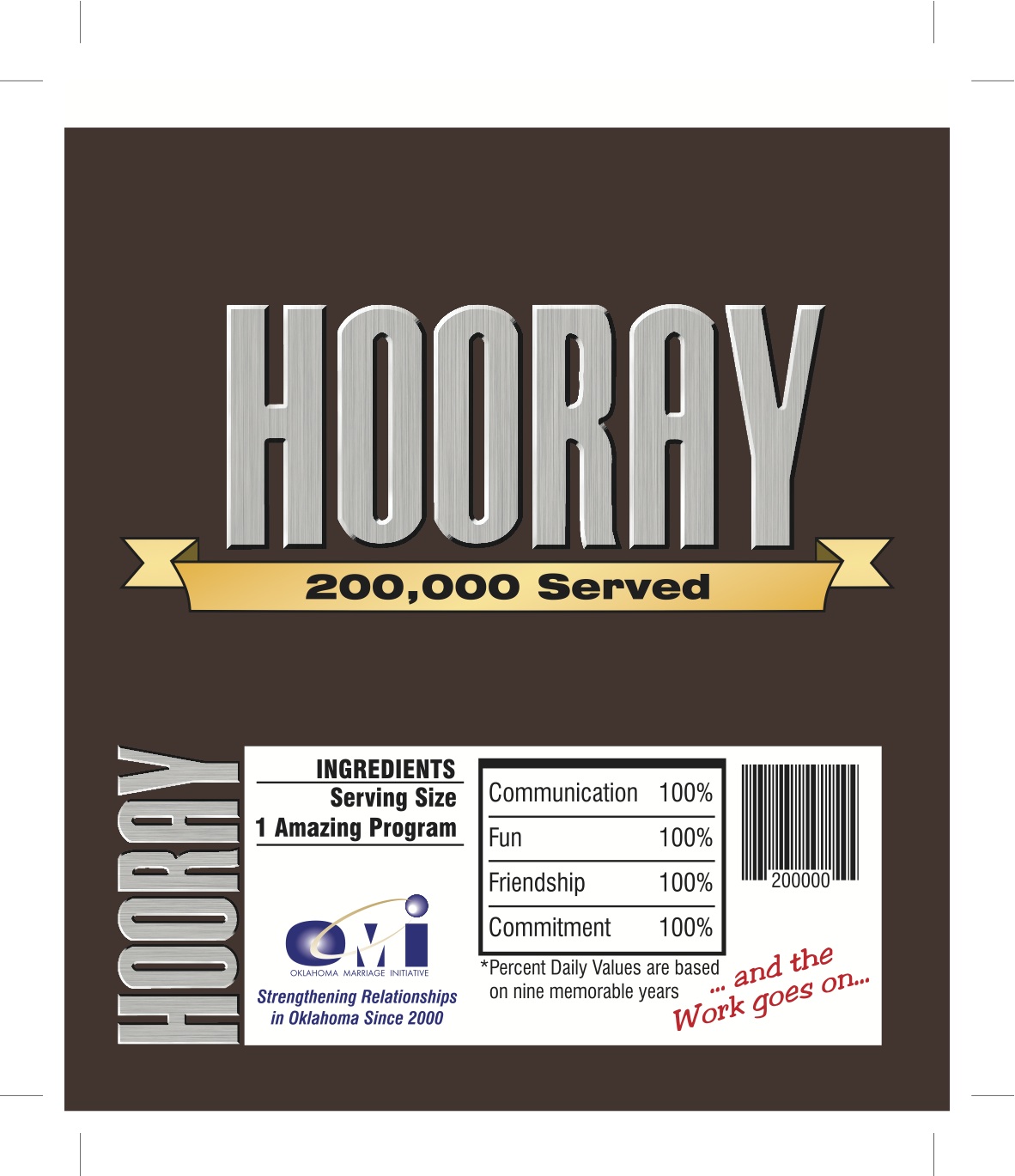My clinical supervisor once gave me some advice that plays over in my thoughts from time to time. She said, “You don’t really have to guess at what people are thinking. Usually, whatever comes out of their mouth is what is at the top of their mind. And context? Wherever they live and whatever they’re surrounded by are clear determining factors of what they’ll be bringing with them into the therapy office.”
I was thinking about this message last week because I was wondering why weddings have been occupying so much of my thinking lately. I didn’t have to wonder too long, however, because my supervisor was right. I’ve been attending weddings because it’s the summer “wedding season” of 2010 and I work at a university populated with students. These students are generally of the age to begin wedding hopes, dreams and plans…and also host or attend wedding ceremonies. Finally, my children are 18 and 23, which means THEIR friends are also thinking about and participating in weddings.
I’m immersed. Immersed in “dreamy-hopeful-lovey-cool-fun-startingoutonournewjourney” land. The upside of this immersion is having the chance to observe magical moments at each and every ceremony. This particular story is about magic. The magical power of a network of friends – focused, purposed and amazing.
And speaking of being immersed…I’ll begin the story by considering Nemo . “Finding Nemo” was a Disney masterpiece chock-full of important life lessons. The illustration I’d like to highlight is the “SWIM DOWN – KEEP SWIMMING!!” scene. Do you remember it? Nemo and Dory were almost home from Sidney when Dory was scooped up along with a massive school of fish into a fisherman’s net.
. “Finding Nemo” was a Disney masterpiece chock-full of important life lessons. The illustration I’d like to highlight is the “SWIM DOWN – KEEP SWIMMING!!” scene. Do you remember it? Nemo and Dory were almost home from Sidney when Dory was scooped up along with a massive school of fish into a fisherman’s net.
As the net began an upward ascent, pulled by a hydralic lift aboard the boat, the fish began to panic. That’s when the magic happened. Nemo and his father began spreading the message to all the fish to swim downward. It would only work if they ALL swam together. Here’s a visually rough clip of the scene. I get goosebumps when watching it. Take a look….
Amazing things were accomplished when all the fish focused toward one goal. And ONLY because they planned together (Nemo and his father agreed on the plan) and worked together.
Another example? Amazing things were accomplished when hundreds of thousands coallition troops stormed the beaches of Normandy and paratrooped from the sky to turn the tide during WWII. And ONLY because they planned together and worked together.
And, amazing things were accomplished by a powerfully cohesive and supportive group of friends at Ryan and Elissa’s wedding in Stillwater, OK – Fall of 2008. And ONLY because they planned together worked together. Here’s what I witnessed when attending this wedding of my nephew Ryan and his lovely bride, Elissa:
I walked into the church before it began and was met with a visual of thirty or so college aged attendees greeting each other, opening the doors for guests arriving, suggesting to those just arriving that they sign the guest book, walking through the sanctuary of the church and meeting and greeting those seated.
What I immediately noticed was a warm and inviting environment that seemed to be completely manged by the bride and groom’s peers. “Interesting,” I thought. “They all seem invested in this process, and genuinely engaged in helping the guests feel welcome.” I found my seat, said hello to my family and made my second observation:
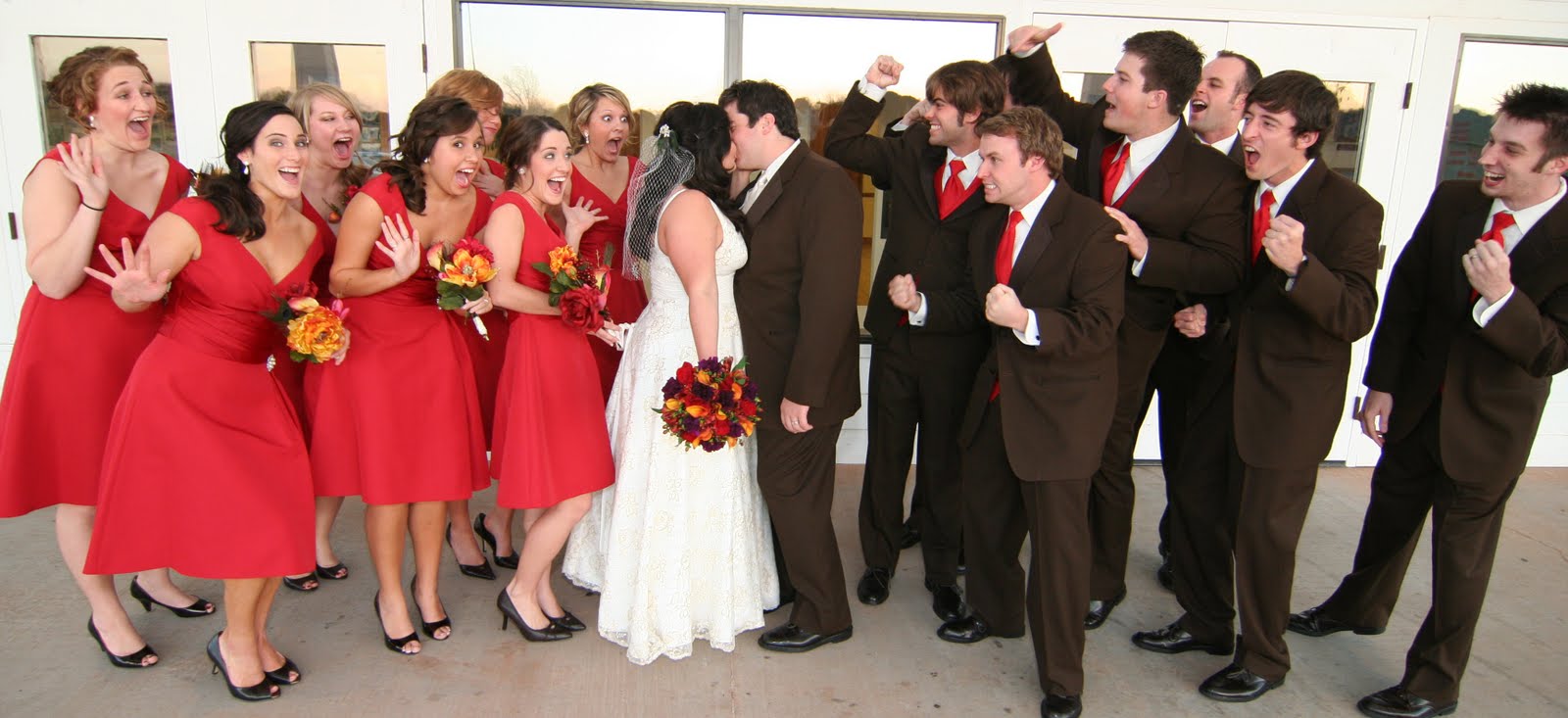
The bride and groom’s friends were basically running the ceremony. Although they had the traditional pastor-types leading the ceremony, the fingerprints of the wedding party were everywhere. They sang and accompanied several songs, the groomsmen pulled out matching sunglasses on a particular cue, the bridesmaids walked as if they knew each other and didn’t miss a beat whenever the bride’s dress needed arranging or the flowers needed to be held. Hmm.
This group was synchronized like a well oiled support machine. My next observation?
After the ceremony, the entire wedding party had exited to music played by their group. As I stood up to leave the sanctuary something caught my eye. In a flash, the bridesmaids came back into the emptying auditorium and began to spread out. They had a purpose but I didn’t yet understand what they were doing. I watched with intrigue as they began to quickly pick up all the wedding flower decorations, speak with the groomsmen who were tearing down the musical equipment authoritatively, talk with each other about “who cleaned out the dressings rooms and did they do a final check on all the lights,” and other efficient and responsible dialogue.
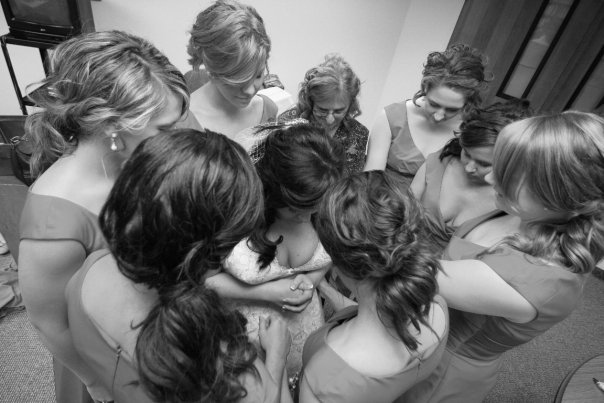
What was UP with this group?? At other weddings I had witnessed planners and/or bride or groom relatives do this same kind of task. But THIS was entirely the wedding party. Before I could really process this modern-day “Elves and the Shoemaker” magic, the auditorium was spotless. The work was DONE. And…we all headed to the reception. What did I find there? I’m sure you can guess…
The groom’s friends DJ’d the party. The bride’s friends escorted her outside when she got hot, and responded to the groom’s request of a drink for his bride. The group danced with the groom’s grandfather, they danced together, and they danced with each other. And, every time I turned around, one of them was talking to another guest – engaged in a genuine conversation and getting to know someone they had only met that night.
HERE IS A SHOT OF THE BRIDE AND HER MOTHER GETTING THEIR HAIR AND MAKEUP DONE BY TWO OF “THE GROUP.” ELISSA’S MOTHER HAS RHOMBERG’S DISEASE AND GETTING A MAKEOVER WAS A SPECIAL TREAT. ELISSA SHARED WITH ME THAT THIS WAS ONE OF HER FAVORITE SHOTS OF THE WEDDING…SHE AND HER MOM TOGETHER, GETTING READY WITH THE SUPPORT OF HER FRIENDS.
This group dynamic was the most powerful I’ve witnessed at a wedding of that age group (22-28ish). Later I found out the bride’s friends did the photography for the wedding, did the hair and make-up for the bride and her mother, and did the flower decorations and arrangments for the church and reception. When I asked the bride about the role of the “group” she said: “I truly do have a great group of friends that allowed us to have a magnificent wedding on a small budget. My hair, set-up of everything, photography and flower and decor arrangement was done by tons of our little helpers.”
So what is to be gained from learning about this group? Are groups important? Do they provide a social safety net for young couple stress and for setting norms about the institution of marriage itself? The short answer is yes. What a culture or society “agrees to” is extremely influential regarding how people think and feel about a particular issue. So the answers as to what can be gained are these validating life lessons, taught by group instruction:
When you need support, we’re here.
When you need diversity and creativity, we’re here.
We were beside you when you were married, so we’re in this together.
You’re worth our time and attention.
We believe in you, your marriage and your future.
When a group “blesses” a wedding, it’s a powerful thing. I would say it’s magic. And in this particular case, it was the mind-numbing magical power of the “sistah and bro-hood” wedding planners extraordinaire.
They were there when it started and I have a sneaking suspicion that when Elissa and Ryan celebrate their 50th wedding anniversary, they will already know who to call to plan their party.
